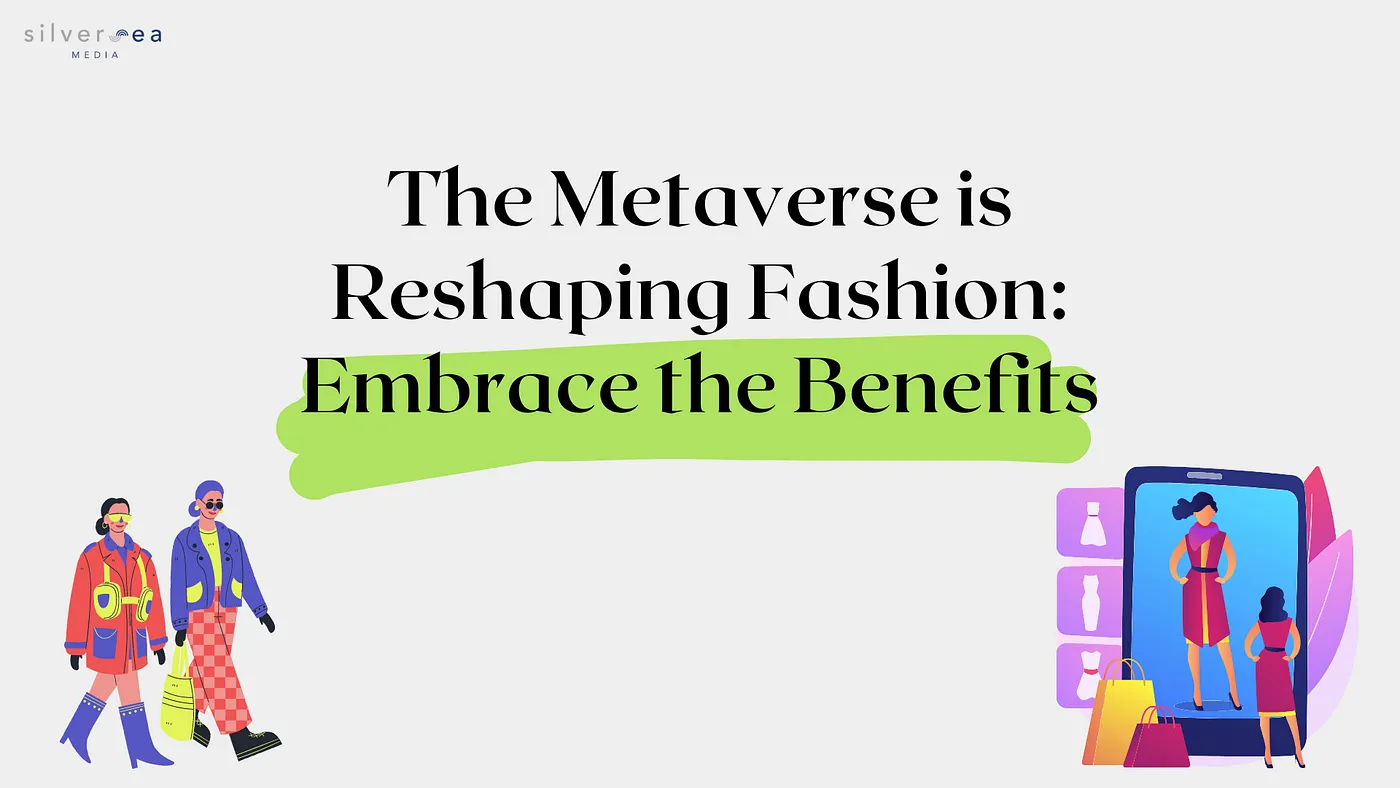The wave of immersive fashion technology encompasses everything from digital fittings and virtual storefronts, personalizing the look of your virtual gaming avatar and capitalizing on NFTs to virtual runaways and fashion shows. According to a United States investment bank, the virtual fashion market could be worth over $55 billion by 2030.
New web3 and metaverse technologies are expected to be integrated into daily business in the long run. They offer untapped opportunities for retailers and fashion brands to reach, engage, and inspire an ever-growing community in the online world. Here are some of the key benefits of leveraging the metaverse fashion.
What Benefits Can Fashion Brands Get from Entering the Metaverse?
Innovation and Creativity
The fashion industry is anchored on creative processes, storytelling, self-expression, and personal enjoyment. That being said, designers sometimes face challenges that hinder innovation, such as fabric limitations, material durability, and space constraints. Fortunately, that is all out of the window, thanks to the metaverse.
The metaverse is injecting fresh air into the fashion industry by liberating creators, art directors, marketers, and other people in the industry from these constraints. In a digital space, we are not bound by tactile materials or even the law of physics. We could move freely between different 3D worlds and the physical world with the help of virtual and augmented reality. Imagine the potential scope for innovation and creativity if we can incorporate immersive technologies to realize the wildest artistic concepts from our deepest imagination.
Leveling Up On Personalization
The metaverse, and the immersive technology that underpins it, have opened up the possibility of accessing fashion for us as individuals rather than the masses. In the metaverse, customizing styles entails the user choosing colors, prints, fabrics, and other predefined sets of options. A 3D configurator tool and AR technology can be employed to simulate the look and feel of the final product. Brands can integrate this into the customer shopping journey and create the most engaging virtual try-on.
In the metaverse, providing customization options allows users to play a role in creating their own assets and shaping their digital identity. Everything can be personalized for each avatar, down to the smallest detail. It adds tremendous value in an increasingly customer-centric market where many of us are looking for one-of-a-kind pieces.

Taking Customer Engagement to the Next Level
Embracing the metaverse can help brands tap into newer, more dynamic forms of customer engagement. People crave exciting experiences. That’s why the fashion industry must undergo constant updates so that shopping in the metaverse will be static and dull.
For example, brands can host virtual fashion shows with immersive technologies like virtual reality. It allows viewers to experience the show as if they were actually there while they are anywhere in the world. They can even shop the runway looks directly from an app.
H&M has recently become one of the latest fashion brands to launch an immersive metaverse experience on an online game platform, Roblox. The new H&M Loooptopia on Experience on Roblox gives players the ability to create virtual garments and wardrobes for their avatars, experimenting with materials and patterns. Players can gather various fashion ingredients by engaging in mini-games, styling sessions, and live events.

Another brand that has jumped into the immersive experience world is Calvin Klein. Its Asian-based customers get a chance to win a variety of prizes by playing three Ready Player Me-powered games. They are instructed to dress their avatars with fresh pieces from their latest capsule collection. They can then share pictures of their outfits with the community.
Capitalizing on NFTs
When it comes to the fashion industry, non-fungible tokens (NFTs) can be digital versions of physical pieces of clothing or a one-off digital-only design. It can be anything from a whole outfit to a pair of digital shoes, sunglasses, handbags, or even small accessories like earrings.
For many tech-savvy customers, owning a virtual fashion NFT denotes exclusivity and unique ownership. That idea of a limited series generates buzz and demand for something that can gain value over time. Additionally, they can collect these exclusive NFTs in the digital world and show them to everyone, versus collecting things in the real world and showing them to only a few people.
Customers can also win or buy an NFT in the metaverse; as a reward, the brand will bring them access to the real world. They may be given access to an exclusive in-person event where they can have an experience and make real-world purchases.
In May of last year, Gucci collaborated with Roblox, launching a space called Gucci Garden Experience. Users had the opportunity to explore Garden’s immersive themed rooms, try on and purchase Gucci NFTs to be worn inside the game. The activation was so successful that a virtual version of Gucci’s iconic handbag sold for a price tag higher than its physical counterpart.

Redefining Sustainable Fashion
Immersive technologies are shaping a unique vision for clothes consumption. Brands can combine infinite creative possibilities and ways of dressing up in the virtual sphere, small product runs, low-cost virtual storefronts, and highly personalized pieces worn in real life. All of this creates a new route of sustainability.
Shopify has reported a reassuring 40% decrease in merchandise returns due to the incorporation of AR and 3D virtual dressing rooms. By giving customers a better indication of what they will be buying, you decrease the odds of them returning an item that doesn’t flatter or otherwise suit them. With returns running at such a high cost to the environment, immersive virtual fittings contribute to sustainable fashion practices.
At the design and development stage, brands can reduce their carbon footprint using digital samples. The Fabricant, a digital fashion house, replaced physical samples with digital ones and claimed they reduced their carbon footprint by an estimated 30%. In operations, the digital clothing version can be an asset through several steps; designing, sampling, marketing, and pre-selling before producing the physical version.

The metaverse is called to transform the fashion industry by presenting new consumer touchpoints, boosting a unique digital presence, and providing new revenue streams. Whether you are an established fashion brand or an emerging designer, there will be opportunities for you to showcase your work in the metaverse and share it freely across virtual worlds.
Silversea Media Can Help You Thrive in the Metaverse
Silversea Media stands at the forefront of immersive technology. The Company employs its proprietary engine, AI algorithms and VR/AR/XR capabilities to produce compelling Enterprise Metaverse Solutions. Silversea Media’s MetaTwin 3D platform bridges the physical and digital worlds with a metaverse experience, helping businesses across multiple industries to digitalize and expand. Key customers range from large blue chips to SMEs, in sectors such as retail, real estate, events, education and tourism.
Contact Silversea Media to learn how to take your business to the metaverse: https://silversea-media.com/contact/





